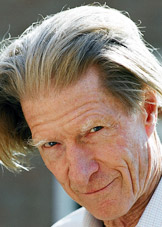Nobel Foundation awarded the 2012 Nobel Prize in physiology or Medicine to Dr. John B. Gurdon and Dr. Shinya Yamanaka for stem cell research. The Nobel Prize recognizes these two scientists who discovered that mature, differentiated cells can be reprogrammed to become a pluripotent cells which are capable of developing into all tissues of the body. Their Research has given a new hope to organic development science.
During the first half of 20th century it was assumed that “when body cells become mature they get locked into their newly differentiate state, and are unable to return to the previously immature, pluripotent stem cell state”. In 1962, Sir John B. Gurdon radically changed this view by demonstrating that the nucleus from a differentiated frog intestinal epithelial cell was capable of generating a fully functional tadpole upon transplantation to an enucleated egg. Gurdon’s discovery was the starting point for cloning endeavors in various organisms. However, it was not fully demonstrated that whether a differentiated cell be fully reprogrammed to become pluripotent state. Later after 40 years in 2006, by an astonishingly simple procedure, Dr. Shinya Yamanaka proved that introduction of a small set of transcription factors into a differentiated cell was sufficient to revert the cell to a pluripotent state.
Now what was the intention of this research? There remain a number of devastating diseases and illnesses including diabetes, retinal degeneration and Parkinson’s which continue to challenge medical scientists and the well-being of people everywhere. Finding treatments, or better still prevention’s, for these, and other enduring human illnesses will require nothing short of a medical miracle. Stem cells have the potential to create that miracle. They can replace or repair any damaged tissue, they have the potential to tackle degenerative diseases, from Alzheimer’s to cancer, from diabetes to heart disease, to leukaemia and sight loss.
To date, adult stem cell research has yielded a greater number of clinical trials and applied treatments than embryonic research. However, embryonic stem cells have properties which adult stem cells do not and it is critically important that we pursue both research avenues in parallel if we are to benefit fully from the potential which stem cells hold. This thing was recognized by both Sir Gurdon and Dr. Shinya before they started their research. This sense of discovery at the cutting edge of human science is the greatest incentive to become involved. For many others it will be the personal experience or tragedy of witnessing a degenerative condition that could be made a thing of medical history.
On the Nobel Prize award ceremony, Professor Juleen Zierath, a Member of the Nobel Committee for Physiology or Medicine, summarized the key discoveries made by the two Laureates which led to the award of this year’s prize. She explained that Sir John B. Gurdon and Dr. Shinya Yamanaka have completely changed our view of the development and cellular specialization. We now understand that the mature cell does not have to be confined forever to its specialized state. Textbooks have been rewritten and new research fields have been established. By reprogramming human cells, scientists have created new opportunities to study diseases and develop methods for diagnosis and therapy. It is completely liable that these two laureates should get attention from all around the world for their spectacular invention. This will give new life to all living beings and hence, they are been awarded the Nobel Prize in physiology or Medicine.

